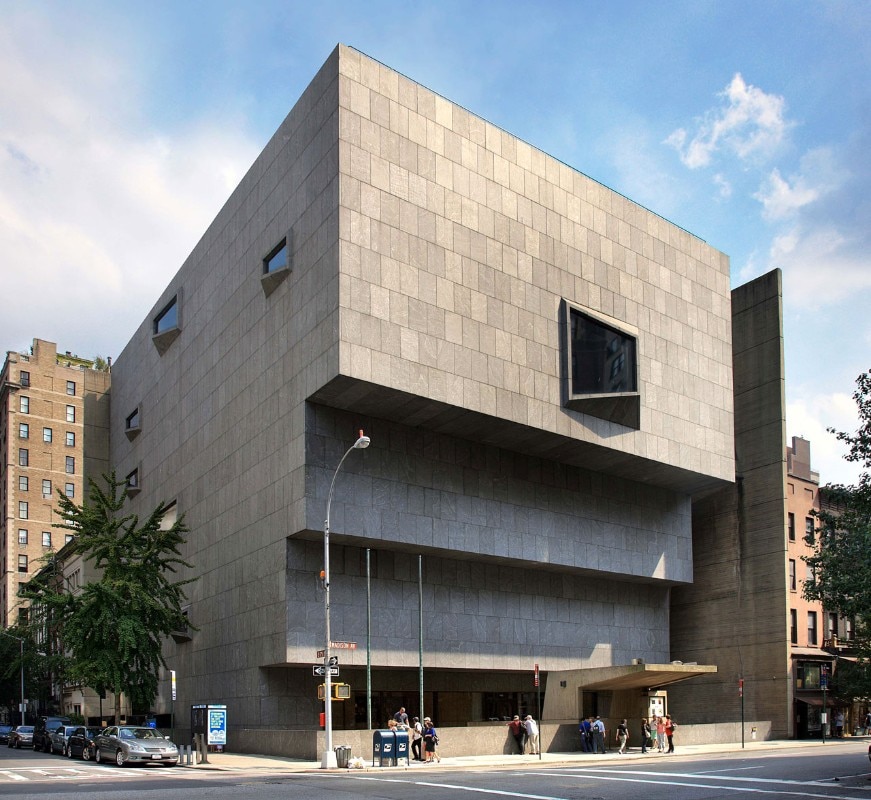
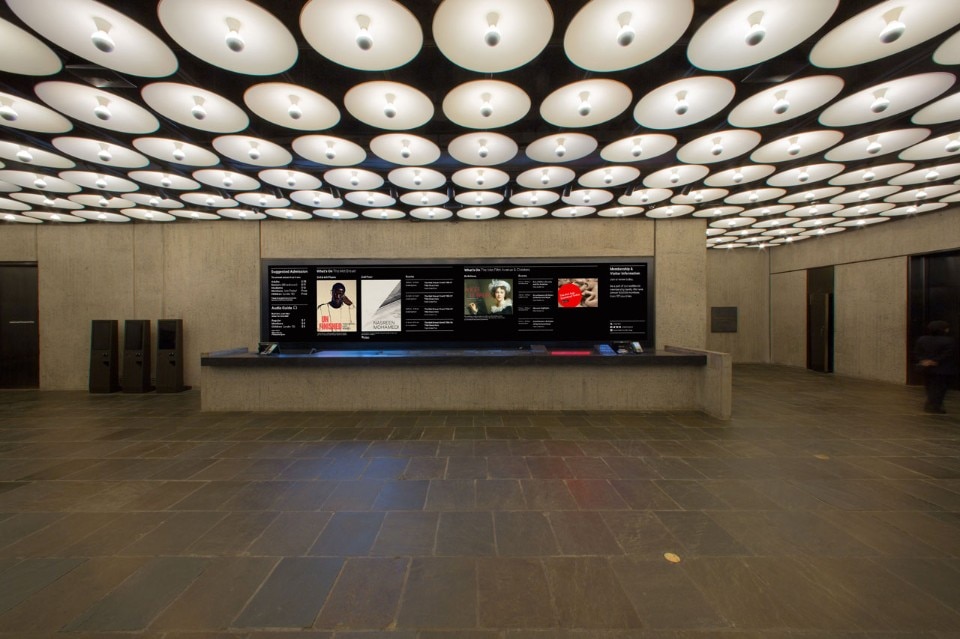
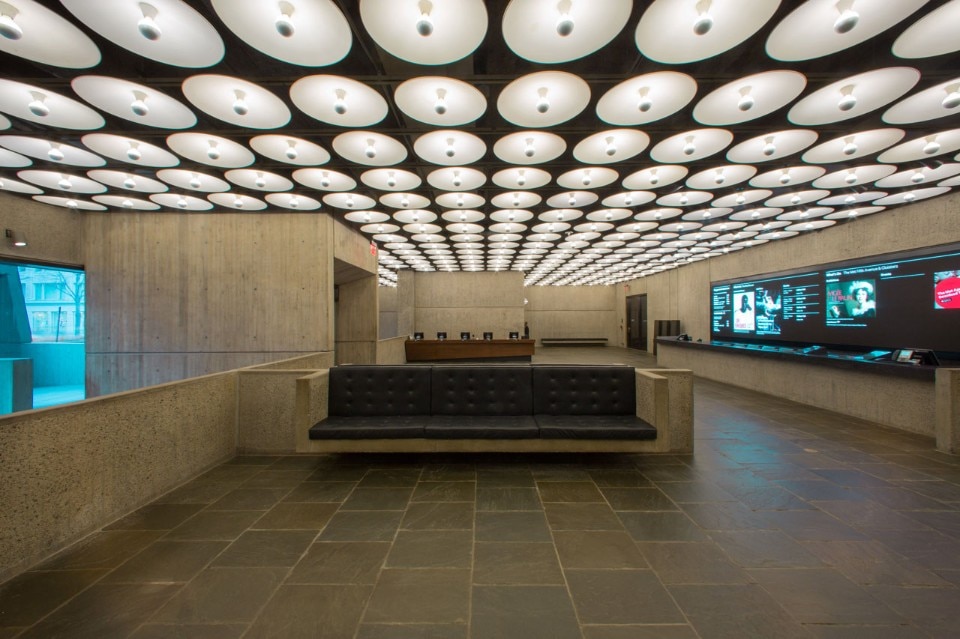
The calendar of future events is very varied. In June there is Diane Arbus, with a selection of rarely seen early photographs, and then Kerry James Marshall, an explorer of Afro-American culture. In November the spotlight shifts to the public designs of Breuer himself, through the photographs of Luisa Lambri and Bas Princen.
Whether you call it the Whitney or the Met, when you enter the building, the architectural details and the furnishing solutions always come as a surprise. In the entrance, an endless sequence of lights, like solar discs, cover the whole ceiling, forming a vast luminous carpet, almost a tribute to the pulsating signs of the Broadway theatres. In the rooms above, an avant-garde system of tracks on a grid allow the exhibition panels and the lighting to be moved, while complex window embrasures let the light penetrate the rooms but without ever making it difficult to see the works, and create a chequer board of inscrutable eyes on the building’s external facade.
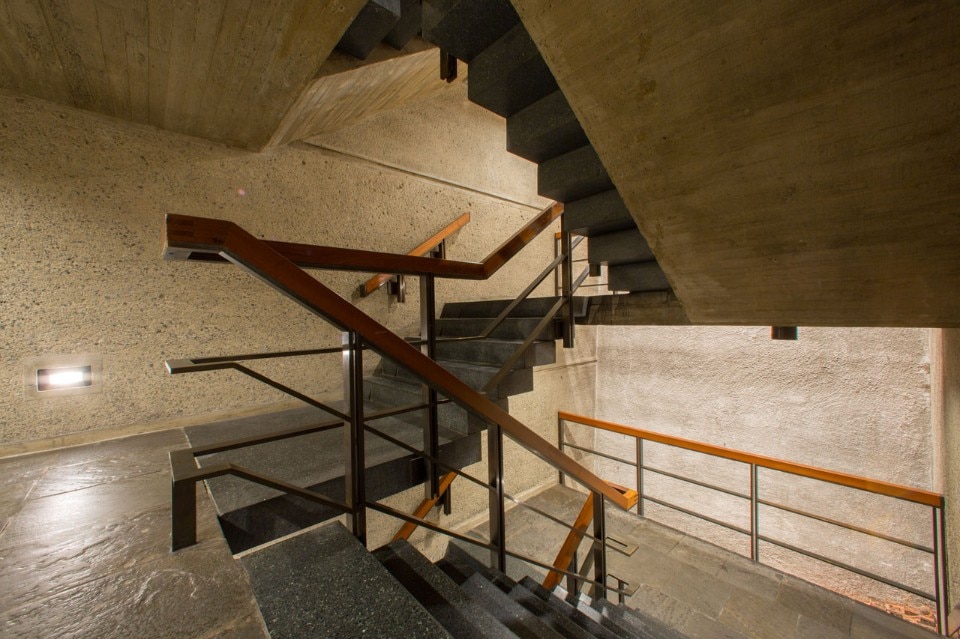
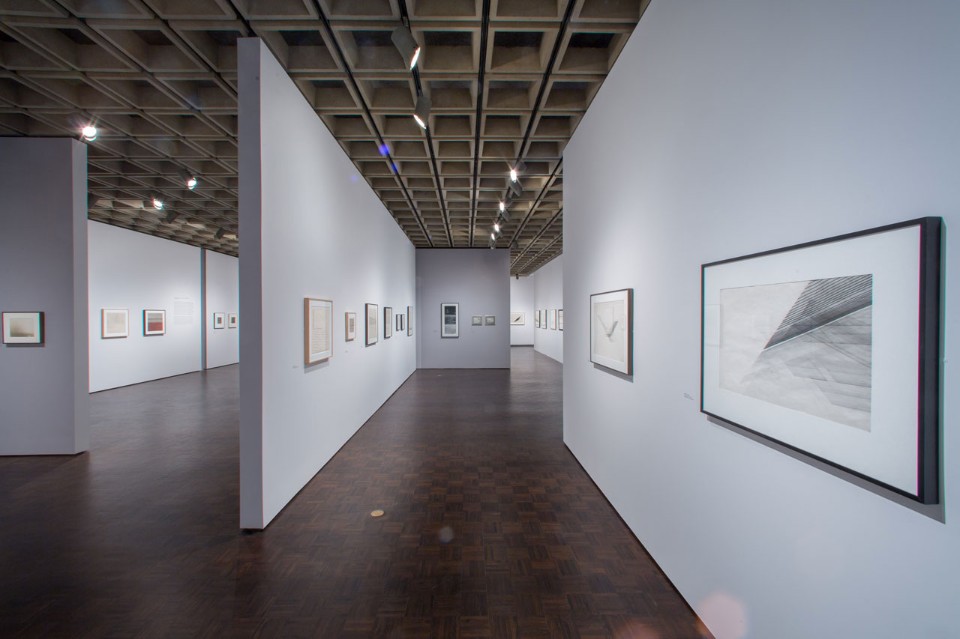
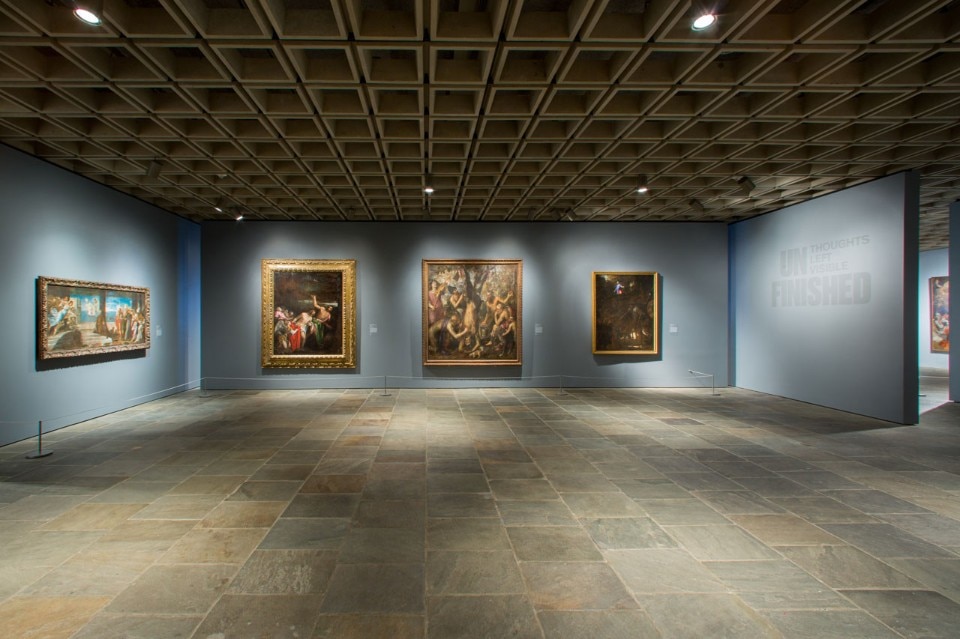
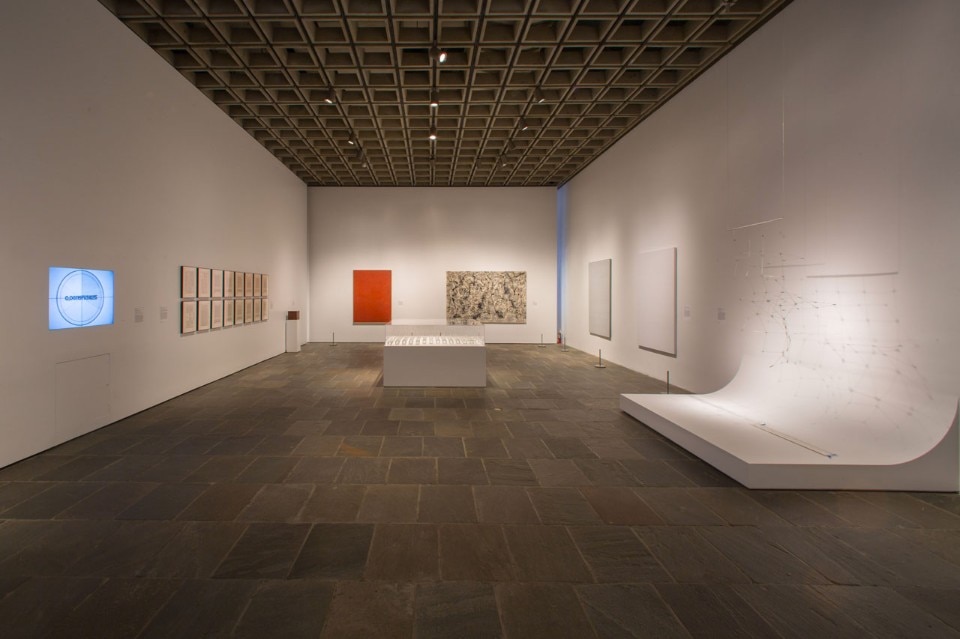
One room is then dedicated to the relationship with unfinished art from the 1950s onwards, which translated into works created in series or repetitions of the same theme. Another room focuses on interaction, with the visitor asked to complete works by Lichtenstein and Warhol. Various works, such as two sculptures in chocolate and soap by Janine Antoni, also show that unfinished art can take the form of destruction and voluntary disintegration. Or it becomes an act that is an end in itself, a process, as in Rauschenberg’s White Paintings, works that are always on the verge of becoming something new since they are cyclically repainted by Rauschenberg and even by other artists.
To close is a stroll among the trees in garden of Cy Twombly’s house-cum-studio in the Italian town of Gaeta. The work is a series of six panels – an exquisitely Italian vision that the American artist refused to sell, keeping them in his private collection to the end of this life. It is difficult to say whether Twombly himself saw them as truly finished.
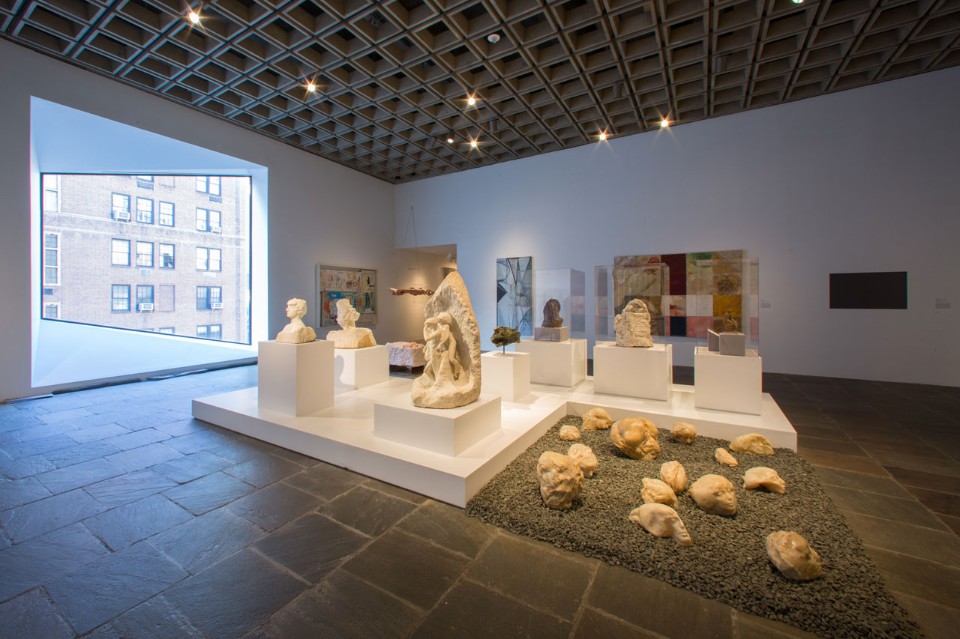
until 5 June 2016
Nasreen Mohamedi
until 4 September 2016
Unfinished
The Met Breuer
945 Madison Avenue, New York


